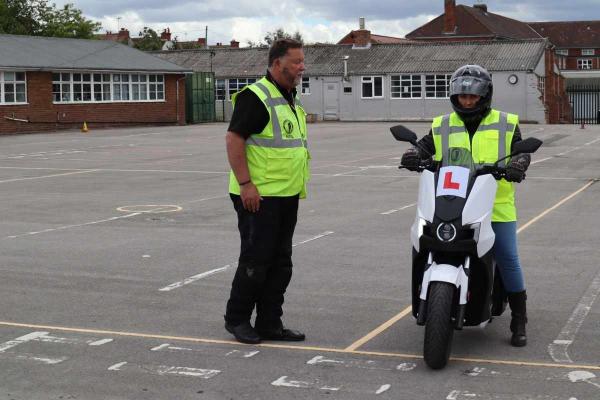How to perform a perfect U-turn during your motorcycle test
Performing a U-turn on your motorcycle test is a nerve-wracking exercise. There are though a few things you can do to make sure you ace it, first time, every time

Member for
54 years 8 monthsPERFORMING a U-turn on a motorcycle is a common exercise for many bikers, and a key part of the UK motorcycle test and CBT. It requires skill, patience and sometimes, quite a bit of practice.
It's also one of the most nerve-wracking parts of your test, despite being one of the slowest speed exercises you will undertake. And that low speed is part of the perceived problem. At low speed, the bike feels vulnerable to wobbles, although there are a few things you can do to ensure you don't fall foul of a fail.
How to perform a perfect U-turn during your motorcycle test
Check for traffic
Whether you are on the test centre or out on the public road, act like there is traffic and make sure you check your blindspot when you pull away and just before you begin to execute the turn. Missing this could result in a fail before you've even hit the road. It's also important not to rush the shoulder check. The examiner will want to see you moving your head in a controlled manner, and looking back for danger even if you both 'know' there isn't any there.
Look where you want to go
This point is drilled into you when you are training, but in truth, it takes quite a while to naturally look when you want to go. To nail the head position, as soon you reach the middle of the road and want to begin heading back in the direction you came, fix your eyes on an imaginary spot about a foot away from the kerb on the opposite side of the road that you started from.
Engine revs, clutch, back brake
To nail a U-turn on a motorcycle, you need to keep the revs high and clutch instead of the throttle to increase speed. The throttle of most bikes isn't accurate enough to perform a U-turn, for most novice riders anyway, so keep the clutch just past the biting point and try and maintain that position. The examiner doesn't care how fast you rev the engine, in fact, you'll probably get some kudos for using an appropriate amount of revs and nailing the clutch control. If you need to slow down a little, don't pull the clutch in as you'll disengage drive to the rear wheel and affect the stability of the bike. Instead, to slow down when performing any slow-speed manoeuvre, give a dab of the back brake - but never the front. The rear brake on most bikes (especially those used by motorcycle training centres) is soft and forgiving and will allow you to scrub some speed without affecting the stability of the bike.
Don't lean on the steering lock stops
To complete a tight u-turn, you shouldn't actually need all of the steering angle you have on offer. With a little bit of lean, and just the right amount of steering input (plus the points mentioned above), you should easily be able to turn a riding school bike around on a road. Furthermore, leaning on the lock stops generally ends up with the bike toppling inwards, and landing you on the floor with a big fat 'fail' on your test certificate. If you do feel the handlebar hit the steering lock stop, slow the bike down slightly (on the bike brake - don't close the throttle!) and open the steering angle just a fraction.
Practise
It makes perfect, dontcha know? Find a quiet road somewhere and practise your U-turns – a few minutes once or twice a week will keep you sharp.












